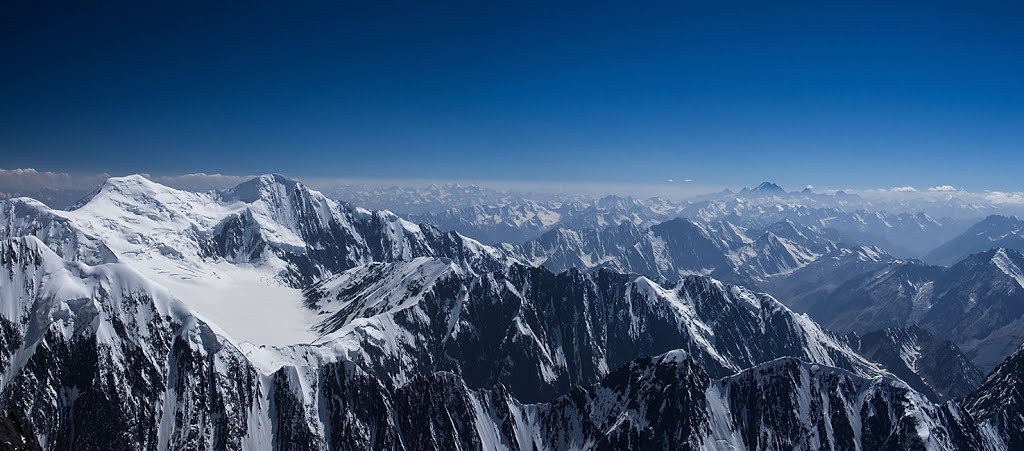|
Yamgan
Yamgan District is one of the 29 districts of Badakhshan Province in eastern Afghanistan. It was created in 2005 from part of the Baharak District and is home to approximately 20,000 residents, mostly Ismailis. History During the Afghan Civil War the area was under Taliban influence from 2015 to 2019, on September of that year Afghan National Security Forces The Afghan National Security Forces (ANSF), also known as the Afghan National Defense and Security Forces (ANDSF), were the military and internal security forces of the Islamic Republic of Afghanistan. Structure The Afghan National Security Forc ... declared they had full control over it. On late March 2020 the district was fully captured by the Taliban. References External linksMapat the Afghanistan Information Management Services Districts of Badakhshan Province {{Badakhshan-geo-stub ... [...More Info...] [...Related Items...] OR: [Wikipedia] [Google] [Baidu] |
Badakhshan Province
Badakhshan Province (Persian/ Uzbek: , ''Badaxšān'') is one of the 34 provinces of Afghanistan, located in the northeastern part of the country. It is bordered by Tajikistan's Gorno-Badakhshan in the north and the Pakistani regions of Lower and Upper Chitral and Gilgit-Baltistan in the southeast. It also has a 91-kilometer (57-mile) border with China in the east. It is part of a broader historical Badakhshan region, parts of which now also lie in Tajikistan and China. The province contains 22 districts, over 1,200 villages and approximately 1 055 00people. Fayzabad, Badakhshan, Fayzabad serves as the provincial capital. Resistance activity has been reported in the province since the 2021 Taliban takeover of Afghanistan. Etymology Badakhshan's name comes from the Middle Persian word "badaxš", which is an official title. The word "ān" is a suffix which demonstrates a place's name; therefore the word "badaxšān" means a place belonging to a person called "badaxš". Duri ... [...More Info...] [...Related Items...] OR: [Wikipedia] [Google] [Baidu] |
Districts Of Afghanistan
The districts of Afghanistan, known as ''wuleswali'' ( ps, ولسوالۍ, ''wuləswāləi''; fa, شهرستان, ''shahrestān'') are secondary-level administrative units, one level below provinces. The Afghan government issued its first district map in 1973.''Afghanistan; Districts and Codes by Province'', Edition 2.0, AID / Rep. DC&A Mapping Unit, October 1991, Peshawar, Pakista/ref> It recognized 325 districts, counting ''wuleswalis'' (districts), ''alaqadaries'' (sub-districts), and ''markaz-e-wulaiyat'' (provincial center districts). In the ensuing years, additional districts have been added through splits, and some eliminated through merges. In June 2005, the Afghan government issued a map of 398 districts. It was widely adopted by many information management systems, though usually with the addition of ''Sharak-e-Hayratan'' for 399 districts in total. It remains the ''de facto'' standard as of late 2018, despite a string of government announcements of the creation of ... [...More Info...] [...Related Items...] OR: [Wikipedia] [Google] [Baidu] |
Provinces Of Afghanistan
Afghanistan is divided into 34 provinces (, '' wilåyat''). The provinces of Afghanistan are the primary administrative divisions. Each province encompasses a number of districts or usually over 1,000 villages. Provincial governors played a critical role in the reconstruction of the Afghan state following the creation of the new government under Hamid Karzai. According to international security scholar Dipali Mukhopadhyay, many of the provincial governors of the western-backed government were former warlords who were incorporated into the political system. Provinces of Afghanistan Regions of Afghanistan UN Regions Former provinces of Afghanistan During Afghanistan's history it had a number of provinces in it. It started out as just Kabul, Herat, Qandahar, and Balkh but the number of provinces increased and by 1880 the provinces consisted of Balkh, Herat, Qandahar, Ghazni, Jalalabad, and Kabul. * Southern Province – dissolved in 1964 to create Paktia Provinc ... [...More Info...] [...Related Items...] OR: [Wikipedia] [Google] [Baidu] |
Flag Of Taliban
A flag is a piece of fabric (most often rectangular or quadrilateral) with a distinctive design and colours. It is used as a symbol, a signalling device, or for decoration. The term ''flag'' is also used to refer to the graphic design employed, and flags have evolved into a general tool for rudimentary signalling and identification, especially in environments where communication is challenging (such as the maritime environment, where semaphore is used). Many flags fall into groups of similar designs called flag families. The study of flags is known as "vexillology" from the Latin , meaning "flag" or "banner". National flags are patriotic symbols with widely varied interpretations that often include strong military associations because of their original and ongoing use for that purpose. Flags are also used in messaging, advertising, or for decorative purposes. Some military units are called "flags" after their use of flags. A ''flag'' (Arabic: ) is equivalent to a brigade in ... [...More Info...] [...Related Items...] OR: [Wikipedia] [Google] [Baidu] |
Taliban
The Taliban (; ps, طالبان, ṭālibān, lit=students or 'seekers'), which also refers to itself by its state (polity), state name, the Islamic Emirate of Afghanistan, is a Deobandi Islamic fundamentalism, Islamic fundamentalist, militant Islamism, Islamist, Jihadism, jihadist, and Pashtun nationalism, Pashtun nationalist political movement in Afghanistan. It ruled approximately three-quarters of the country Islamic Emirate of Afghanistan (1996–2001), from 1996 to 2001, before being overthrown following the United States invasion of Afghanistan, United States invasion. It Fall of Kabul (2021), recaptured Kabul on 15 August 2021 after nearly 20 years of Taliban insurgency, insurgency, and currently controls all of the country, although its government has Recognition of the Islamic Emirate of Afghanistan, not yet been recognized by any country. The Taliban government has been criticized for restricting human rights in Afghanistan, including the right of women in Afgh ... [...More Info...] [...Related Items...] OR: [Wikipedia] [Google] [Baidu] |
Afghanistan
Afghanistan, officially the Islamic Emirate of Afghanistan,; prs, امارت اسلامی افغانستان is a landlocked country located at the crossroads of Central Asia and South Asia. Referred to as the Heart of Asia, it is bordered by Pakistan to the Durand Line, east and south, Iran to the Afghanistan–Iran border, west, Turkmenistan to the Afghanistan–Turkmenistan border, northwest, Uzbekistan to the Afghanistan–Uzbekistan border, north, Tajikistan to the Afghanistan–Tajikistan border, northeast, and China to the Afghanistan–China border, northeast and east. Occupying of land, the country is predominantly mountainous with plains Afghan Turkestan, in the north and Sistan Basin, the southwest, which are separated by the Hindu Kush mountain range. , Demographics of Afghanistan, its population is 40.2 million (officially estimated to be 32.9 million), composed mostly of ethnic Pashtuns, Tajiks, Hazaras, and Uzbeks. Kabul is the country's largest city and ser ... [...More Info...] [...Related Items...] OR: [Wikipedia] [Google] [Baidu] |
Baharak District, Badakhshan
Baharak district is a district of Badakhshan Province, Afghanistan located about 30 km southeast of Fayzabad. The capital is the city of Baharak. The district is also called Baharistan. Sir Aurel Stein Sir Marc Aurel Stein, ( hu, Stein Márk Aurél; 26 November 1862 – 26 October 1943) was a Hungarian-born British archaeologist, primarily known for his explorations and archaeological discoveries in Central Asia. He was also a professor at ... says that Bahārak was the capital of Badakhshan before the present capital of Fayzabad.''Innermost Asia: Detailed report of explorations in Central Asia, Kan-su and Eastern Iran'', 5 vols. M. Aurel Stein. 1928. Oxford. Clarendon Press. Reprint: New Delhi. Cosmo Publications. 1981, Vol. II, p. 877. Footnotes External linksMapat the Afghanistan Information Management Services Districts of Badakhshan Province {{Badakhshan-geo-stub ... [...More Info...] [...Related Items...] OR: [Wikipedia] [Google] [Baidu] |
Isma'ilism
Isma'ilism ( ar, الإسماعيلية, al-ʾIsmāʿīlīyah) is a branch or sub-sect of Shia Islam. The Isma'ili () get their name from their acceptance of Imam Isma'il ibn Jafar as the appointed spiritual successor (imām) to Ja'far al-Sadiq, wherein they differ from the Twelver Shia, who accept Musa al-Kadhim, the younger brother of Isma'il, as the true Imām. Isma'ilism rose at one point to become the largest branch of Shia Islam, climaxing as a political power with the Fatimid Caliphate in the 10th through 12th centuries. Ismailis believe in the oneness of God, as well as the closing of divine revelation with Muhammad, whom they see as "the final Prophet and Messenger of God to all humanity". The Isma'ili and the Twelvers both accept the same six initial Imams; the Isma'ili accept Isma'il ibn Jafar as the seventh Imam. After the death of Muhammad ibn Isma'il in the 8th century CE, the teachings of Ismailism further transformed into the belief system as it is known ... [...More Info...] [...Related Items...] OR: [Wikipedia] [Google] [Baidu] |
War In Afghanistan (2001–present)
War in Afghanistan, Afghan war, or Afghan civil war may refer to: *Conquest of Afghanistan by Alexander the Great (330 BC – 327 BC) *Muslim conquests of Afghanistan (637–709) *Conquest of Afghanistan by the Mongol Empire (13th century), see also Mongol invasion of Central Asia (1216–1222) *Mughal conquests in Afghanistan (1526) *Afghan Civil War (1863–1869), a civil war between Sher Ali Khan and Mohammad Afzal Khan's faction after the death of Dost Mohammad Khan * Anglo−Afghan Wars (first involvement of the British Empire in Afghanistan via the British Raj) ** First Anglo−Afghan War (1839–1842) ** Second Anglo−Afghan War (1878–1880) ** Third Anglo−Afghan War (1919) *Panjdeh incident (1885), first major incursion into Afghanistan by the Russian Empire during the Great Game (1830–1907) with the United Kingdom of Britain and Ireland * First Afghan Civil War (1928–1929), revolts by the Shinwari and the Saqqawists, the latter of whom managed to take over Kabul for ... [...More Info...] [...Related Items...] OR: [Wikipedia] [Google] [Baidu] |
Afghan National Security Forces
The Afghan National Security Forces (ANSF), also known as the Afghan National Defense and Security Forces (ANDSF), were the military and internal security forces of the Islamic Republic of Afghanistan. Structure The Afghan National Security Forces consisted of: * Ministry of Defence ** Afghan National Army (ANA) *** ANA Special Operations Command **** Special Mission Wing (SMW) *** Afghan Border Force (ABF) *** Afghan National Civil Order Force (ANCOF) ** Afghan Air Force (AAF) * Ministry of Interior Affairs ** Afghan National Police (ANP) *** Afghan Uniformed Police (AUP) *** Public Security Police (PSP) *** Afghan Border Police (ABP) *** General Directorate for Intelligence and Counter Crime (GDICC) (formerly Afghan Anti-Crime Police (AACP)) *** Afghan Public Protection Force (APPF) *** Counter Narcotics Police of Afghanistan (CNPA) *** Afghan Local Police (ALP) ** General Command of Police Special Units (GCPSU) *** Afghan Territorial Force (ATF) 444 *** Crisis Response Unit ... [...More Info...] [...Related Items...] OR: [Wikipedia] [Google] [Baidu] |



